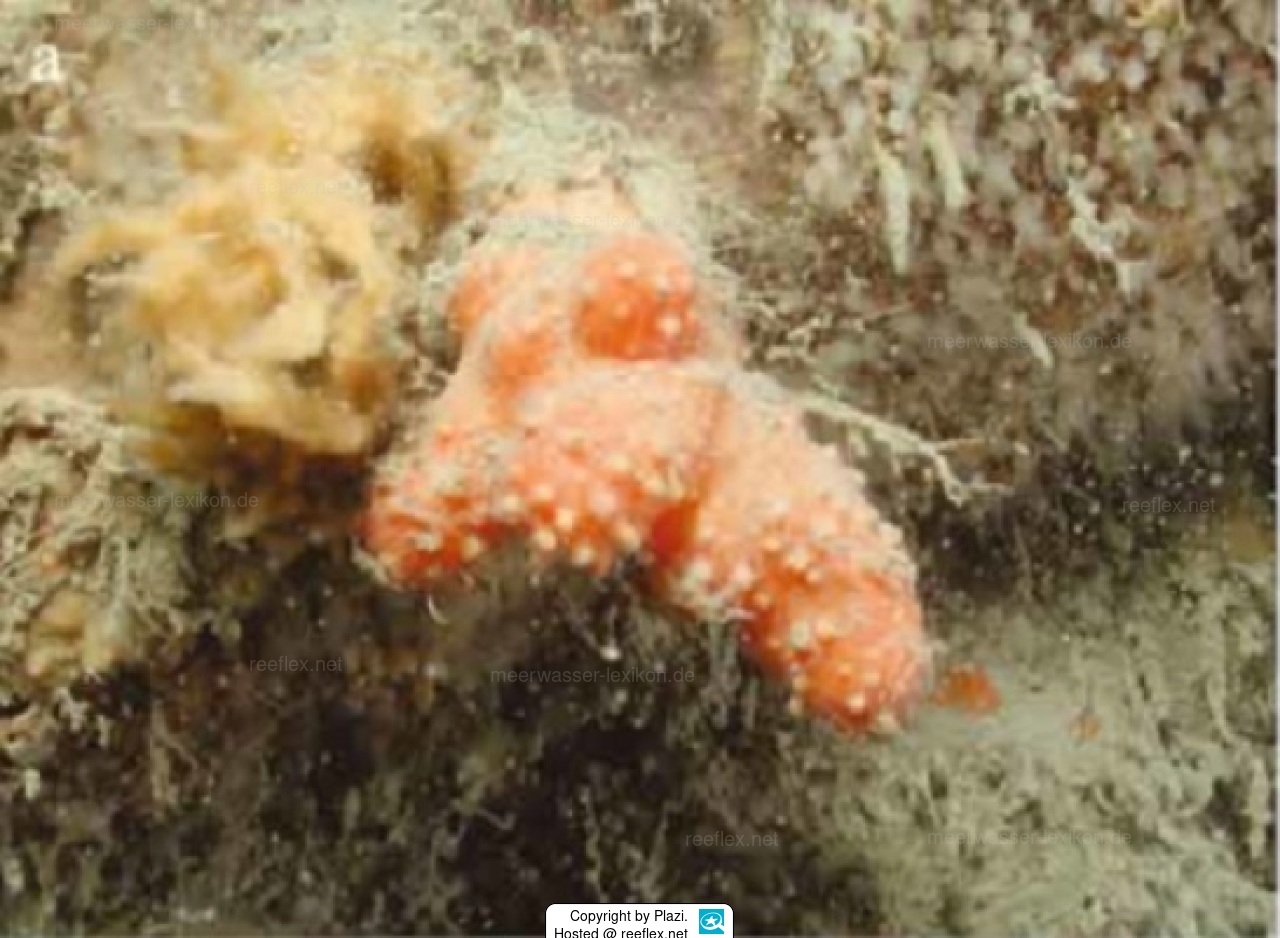Info
Colonies (holotype and paratypes) of Alcyonium glaciophilum are from the southern shore of Tempano Fjord, Chile, where the corals are found at depths of 10 to 15 m on vertical cliffs of Tempano Fjord (Central Patagonian Zone), which is under strong influence of glacial sediments.
Alcyonium glaciophilum is one of the few species that withstands the strong exposure to fine glacial sediment.
The collected holotype was 3.5cm high and 3cm wide, consisting of 4 slightly flattened lobes.
The polyps are distributed over the entire surface of the colony and extend almost to the base. the polyps that were fully retracted are up to 0.70 mm wide and 0.45 mm long;
The base of the colony has sclerites that give stability.
Color. Living colonies are orange in color.
Etymology. The name of the species is derived from the Latin "glacies" meaning ice, and "philum" meaning nature, since it seems to occur only in fjords influenced by icebergs (and their sediments).
Notes. Alcyonium sollasi Wright & Studer, 1889, from the Strait of Magellan and Shag Rocks, has similar rods inside.
It differs in the shape of the colony with many rounded lobes and by clubs with less spiny heads on the surface of the coenenchyma.
In addition, the preserved colonies have brown or yellowish-white color, while all specimens of A. glaciophilum n. sp. are orange.
Alcyonium haddoni from Messier Channel, Chile, and Alcyonium patagonicum, from the Patagonian Shelf, may have a similar colony form to Alcyonium glaciophilum.
However, both species lack the sparsely ornamented rods inside the colony.
Alcyonium yepayek also has a similar colony shape to Alcyonium glaciophilum and also has sparsely ornamented rods inside the base of the colony.
The difference is that these rods are absent inside the upper part of the colony and most clubs have a central wart.
Source:
Pérez, Carlos Daniel & Zamponi, Mauricio Oscar, 2004,
New records of octocorals (Cnidaria, Anthozoa) from the south western Atlantic Ocean, with zoogeographic considerations,
Zootaxa 630, pp. 1-12 : 4
https://doi.org/10.5281/zenodo.3509648
Alcyonium glaciophilum is one of the few species that withstands the strong exposure to fine glacial sediment.
The collected holotype was 3.5cm high and 3cm wide, consisting of 4 slightly flattened lobes.
The polyps are distributed over the entire surface of the colony and extend almost to the base. the polyps that were fully retracted are up to 0.70 mm wide and 0.45 mm long;
The base of the colony has sclerites that give stability.
Color. Living colonies are orange in color.
Etymology. The name of the species is derived from the Latin "glacies" meaning ice, and "philum" meaning nature, since it seems to occur only in fjords influenced by icebergs (and their sediments).
Notes. Alcyonium sollasi Wright & Studer, 1889, from the Strait of Magellan and Shag Rocks, has similar rods inside.
It differs in the shape of the colony with many rounded lobes and by clubs with less spiny heads on the surface of the coenenchyma.
In addition, the preserved colonies have brown or yellowish-white color, while all specimens of A. glaciophilum n. sp. are orange.
Alcyonium haddoni from Messier Channel, Chile, and Alcyonium patagonicum, from the Patagonian Shelf, may have a similar colony form to Alcyonium glaciophilum.
However, both species lack the sparsely ornamented rods inside the colony.
Alcyonium yepayek also has a similar colony shape to Alcyonium glaciophilum and also has sparsely ornamented rods inside the base of the colony.
The difference is that these rods are absent inside the upper part of the colony and most clubs have a central wart.
Source:
Pérez, Carlos Daniel & Zamponi, Mauricio Oscar, 2004,
New records of octocorals (Cnidaria, Anthozoa) from the south western Atlantic Ocean, with zoogeographic considerations,
Zootaxa 630, pp. 1-12 : 4
https://doi.org/10.5281/zenodo.3509648







 Plazi
Plazi





















